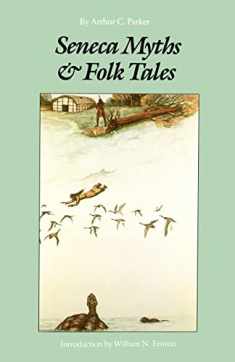
Inheriting the Past: The Making of Arthur C. Parker and Indigenous Archaeology
ISBN-13:
9780816526567
ISBN-10:
0816526567
Edition:
Illustrated
Author:
Chip Colwell
Publication date:
2009
Publisher:
University of Arizona Press
Format:
Paperback
296 pages
Category:
Native American & Aboriginal
,
Cultural & Regional
FREE US shipping
Book details
ISBN-13:
9780816526567
ISBN-10:
0816526567
Edition:
Illustrated
Author:
Chip Colwell
Publication date:
2009
Publisher:
University of Arizona Press
Format:
Paperback
296 pages
Category:
Native American & Aboriginal
,
Cultural & Regional
Summary
Inheriting the Past: The Making of Arthur C. Parker and Indigenous Archaeology (ISBN-13: 9780816526567 and ISBN-10: 0816526567), written by authors
Chip Colwell, was published by University of Arizona Press in 2009.
With an overall rating of 4.1 stars, it's a notable title among other
Native American & Aboriginal
(Cultural & Regional) books. You can easily purchase or rent Inheriting the Past: The Making of Arthur C. Parker and Indigenous Archaeology (Paperback) from BooksRun,
along with many other new and used
Native American & Aboriginal
books
and textbooks.
And, if you're looking to sell your copy, our current buyback offer is $0.3.
Description
In recent years, archaeologists and Native American communities have struggled to find common ground even though more than a century ago a man of Seneca descent raised on New York’s Cattaraugus Reservation, Arthur C. Parker, joined the ranks of professional archaeology. Until now, Parker’s life and legacy as the first Native American archaeologist have been neither closely studied nor widely recognized. At a time when heated debates about the control of Native American heritage have come to dominate archaeology, Parker’s experiences form a singular lens to view the field’s tangled history and current predicaments with Indigenous peoples. In Inheriting the Past, Chip Colwell-Chanthaphonh examines Parker’s winding career path and asks why it has taken generations for Native peoples to follow in his footsteps. Closely tracing Parker’s life through extensive archival research, Colwell-Chanthaphonh explores how Parker crafted a professional identity and negotiated dilemmas arising from questions of privilege, ownership, authorship, and public participation. How Parker, as well as the discipline more broadly, chose to address the conflict between Native American rights and the pursuit of scientific discovery ultimately helped form archaeology’s moral community. Parker’s rise in archaeology just as the field was taking shape demonstrates that Native Americans could have found a place in the scholarly pursuit of the past years ago and altered its trajectory. Instead, it has taken more than a century to articulate the promise of an Indigenous archaeology—an archaeological practice carried out by, for, and with Native peoples. As the current generation of researchers explores new possibilities of inclusiveness, Parker’s struggles and successes serve as a singular reference point to reflect on archaeology’s history and its future.


We would LOVE it if you could help us and other readers by reviewing the book
Book review

Congratulations! We have received your book review.
{user}
{createdAt}
by {truncated_author}



